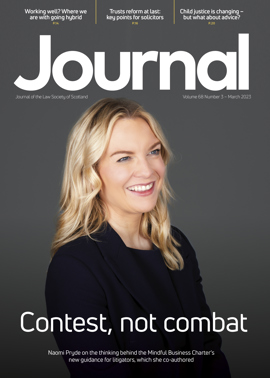Intellectual property: Big tech, AI and enforcement
The end of 2022 and beginning of 2023 brought some interesting cases and lawsuits for intellectual property lawyers, from trade mark infringement in both the physical and virtual world, to potential copyright infringement by artificial intelligence. In this article, we consider some of the most recent decisions and how they impact on current IP law.
UK: Getty Images v Stability AI
The impressive nature of generative AI has been hard to escape recently, with new applications being released almost weekly. From the furore surrounding the potential use cases for ChatGPT, to Google’s new tech “Bard” answering a question incorrectly on its launch, AI has given businesses much to ponder, with the legal considerations not far behind.
Notably in the UK, we recently saw Getty Images moving to sue Stability AI in the High Court for copyright infringement. The allegations surround the processing by Stable Diffusion, a text-to-image AI system, of various images, proprietary to Getty, without a licence. The decision is likely to provide a useful analysis of copyright in the context of generative AI, and confirmation as to whether generative AI can freely learn from content online or whether this use is considered copyright infringement, something which is currently uncertain.
This dispute comes against a background of several other AI and copyright-related developments in the UK. With further considerations on reforms to copyright law for musicians, and the recent House of Lords discussion on data mining, it will be interesting to see whether the court will take the same pro-artist stance. The UK’s position on copyright is notably restrictive, so there is no doubt this one will be watched with keen eyes.
EU: Amazon v Christian Louboutin
In December 2022, we saw the EU Court of Justice open the floodgates regarding Amazon’s potential liability for trade mark infringement. While on the face of it departing from previous case law, the decision may not come as a shock given the EU’s longstanding approach to big tech.
In a judgment concerning Louboutin’s iconic red soles, the CJEU held that where a marketplace sells its own products and third party products, it may be liable for trade mark infringement by third party sellers if a “well informed and reasonably observant user of that site establishes a link between the services of the operator and the sign at use”. In other words, that liability may be imposed where the observer believes the operator is itself marketing the goods which infringe the trade mark. The CJEU helpfully listed several instances where this may be the case:
- The marketing and presentation of the operator’s offers and goods are uniform to those of third parties. An example given is where the marketplace is describing the products as “best seller” without being explicit as to who is actually providing the product.
- The operator’s logo “as a renowned distributor” is displayed on the ads.
- The operator provides services to third party sellers. This may include storing and shipping the goods, as well as dealing with customer queries.
While we await the final decisions in the national courts, there is no doubt that this case will impact on the way many marketplaces operate. The CJEU’s ruling may lead to brands seeing this as an opportunity to finally enforce their IP more strongly (and much more easily) in similar settings.
US: Hermès International v Mason Rothschild
With growing interest in the metaverse, we continue to see brands filing trade marks and taking enforcement action to protect their brand in a virtual world. Notably, we saw Hermès protecting their Birkin bag and a US court consider the applicability of trade mark law in the metaverse.
At the root of this case was the extent to which the NFTs could qualify as artistic works, and the extent to which Rothschild, the creator, could therefore rely on the US First Amendment to prevent liability. While the judge held that the NFTs did constitute artistic works, the jury found that the “incidental” artistry of the NFTs did not bar liability for trade mark infringement, dilution and cybersquatting, suggesting that evidence demonstrated that the BIRKIN mark was used intentionally to confuse consumers into believing the collection originated from Hermès – arguably a logical decision.
The decision indicates that the US approach is that a trade mark registered for physical goods can be enforced against their virtual counterparts, at least insofar as that mark enjoys a reputation (as BIRKIN does). The question as to similarity in the context of non-famous marks, however, remains unknown, as does that of whether this approach would be followed closer to home. While the decision may provide comfort to brands, owners should consider following Hermès’ lead, in extending their trade mark filings to expressly cover “virtual goods”.
Conclusion
With the Getty case yet to be heard, the Amazon case still ongoing and the Hermès decision likely to be appealed, it is exciting to see how IP law will evolve and adapt to meet the legal challenges that this new technology presents.
Perspectives
Features
Briefings
- Civil court: No rule against redaction
- Corporate: Privileged or confidential – who can access
- Intellectual property: Big tech, AI and enforcement
- Succession: Non face-to-face will instructions; form C1
- Agriculture: “Route map” for agricultural reform
- Parking: About this ticket…
- In-house: Caring for the carers







